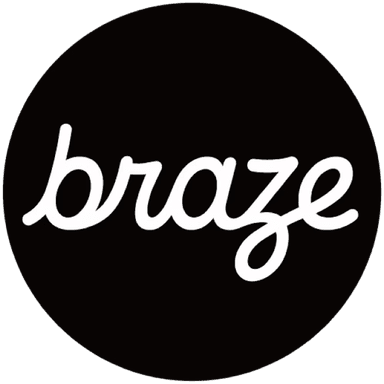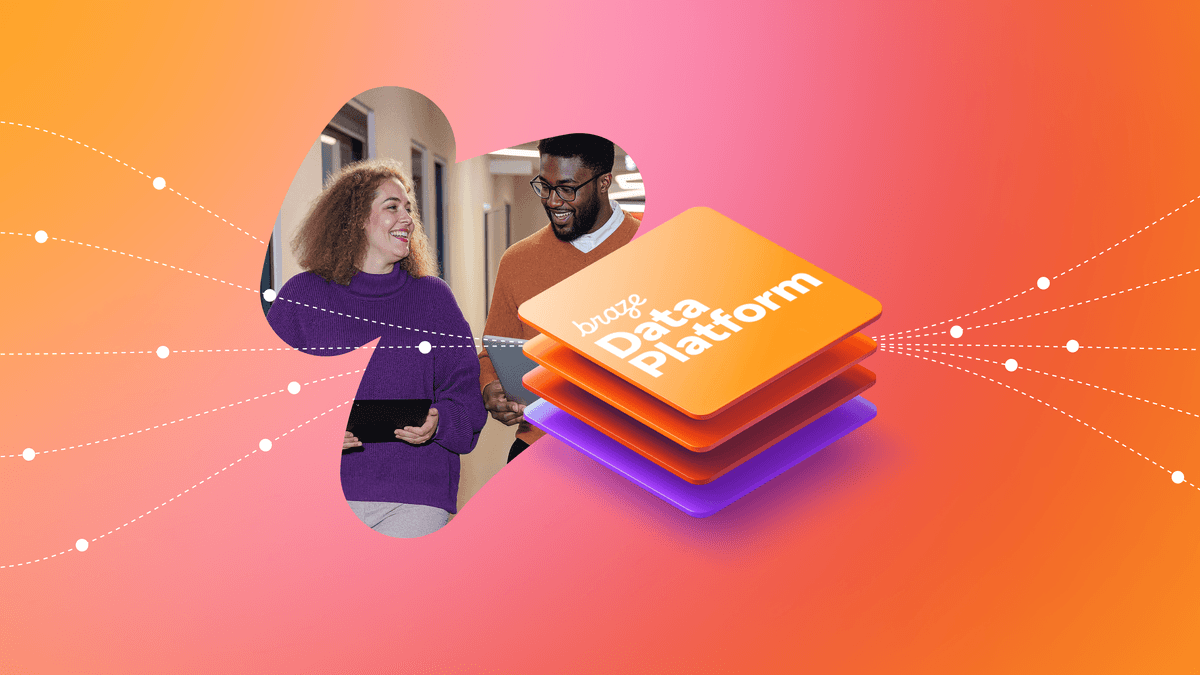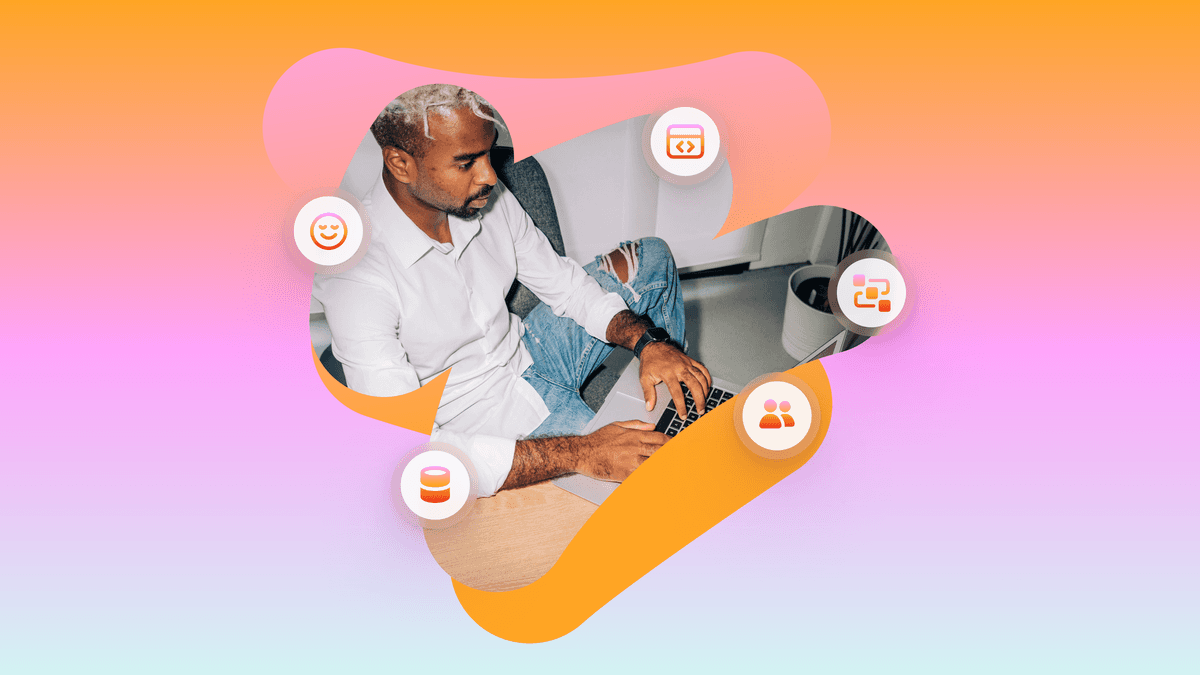Customer acquisition strategies: What they are, why they matter, and how to master them
Published on March 31, 2025/Last edited on March 31, 2025/16 min read


Team Braze
Customer acquisition strategies: What they are, why they matter, and how to master them
Bringing in new customers is essential for any business looking to grow. But customer acquisition is more than getting people to notice your brand. It’s about strategically guiding them from awareness to action in a way that’s efficient, cost-effective, and sustainable.
By understanding the different channels available, aligning marketing and sales efforts, and making the best use of data-driven insights, businesses can improve acquisition by creating something that’s repeatable and scalable.
In this guide, we’ll explore the key elements of customer acquisition, the most effective strategies to try, and real-world case studies that showcase success in action.
Contents:
What is a customer or client acquisition strategy?
Why customer acquisition matters
What is the purpose of a customer acquisition strategy?
What’s the difference between customer acquisition and marketing?
What’s the difference between customer acquisition and retention?
What are customer acquisition channels?
Best in class customer acquisition case studies
Customer acquisition steps you can take inspiration from
How to measure customer acquisition
What is a customer or client acquisition strategy?
A customer acquisition strategy is how businesses attract and convert potential customers. It brings together different teams, like marketing, sales, and customer service, to create a seamless journey from brand awareness to purchase. By harnessing multiple channels, such as email marketing, social media, and more, brands can meet potential customers where they are and guide them toward making a confident buying decision, downloading their app, or otherwise becoming a customer.
The best customer acquisition strategies are designed to nurture leads as they first interact with your brand. Instead of relying on one-off campaigns, they focus on building relationships through consistent customer engagement and value-driven interactions. Whether through targeted content, special promotions, or personalized outreach for anonymous users, the goal is to create a meaningful connection that encourages long-term loyalty.
At its core, customer acquisition is also about winning new customers and setting them up for retention. A well-structured strategy invests resources in the right places, balancing short-term wins with long-term growth. By continuously optimizing based on data and customer insights, businesses can refine their approach, improving conversion rates and maximizing return on investment.
Why customer acquisition matters
Whether you're a startup looking for traction or an established company expanding your market share, bringing in new customers keeps your business financially healthy. It helps generate the revenue needed to cover costs, pay employees, and reinvest in future expansion.
Beyond financial stability, a steady influx of customers signals momentum—something that appeals to investors, partners, and industry influencers. Simply put, a business that can consistently acquire new customers is a business with staying power.
What is the purpose of a customer acquisition strategy?
The purpose of a customer acquisition strategy is to create a structured, repeatable approach to attracting and converting new customers. Rather than waiting for potential buyers to find you, a strong strategy aids your business in actively reaching the target audience through focused efforts.
What’s the difference between customer acquisition and retention?

Customer acquisition and retention are two sides of the same growth strategy. Acquisition focuses on bringing in new customers, but alone, it isn’t enough. Without a strong retention strategy, businesses risk losing customers just as quickly as they gain them.
Retention is about keeping customers engaged and satisfied over time, so that they continue to buy from you rather than seeking alternatives. It involves strategies like personalized communication, loyalty programs, and excellent customer support to build long-term relationships.
Both fuel growth, with acquisition bringing in new sales and customers, and retention maximizing lifetime value.
The most successful businesses strike a balance between the two so they can attract new customers while keeping existing ones engaged and loyal.
What are customer acquisition channels?
Customer acquisition channels are the pathways businesses use to connect with potential customers, introduce them to their brand, and ultimately guide them toward conversion.
Each channel plays a unique role, whether it’s creating awareness, nurturing interest, or driving action. The key to success is orchestrating channels strategically to create a smooth and engaging experience that resonates with audiences.
With privacy regulations evolving and customer expectations rising, brands need to balance efficiency with personalization, making sure they attract new users in ways that are both sustainable and compliant. That means leaning into first-party data, using cross-channel engagement, and blending acquisition efforts with activation and retention strategies.
Key customer acquisition channels
1. Organic and paid search
Search engines remain one of the most powerful customer acquisition tools. Organic search relies on SEO (search engine optimization) to help businesses rank higher in search results, driving consistent, cost-effective traffic over time. Meanwhile, paid search (PPC) campaigns can provide immediate visibility, allowing brands to reach high-intent audiences at the moment they’re searching for a solution. The most effective brands use a combination of both so they dominate relevant search queries through strategic content, like blog posts and ad placements.
2. Social media (organic and paid)
Social media allows brands to engage with their audience where they spend their time, but success requires the right mix of organic presence and paid amplification. Organic social media helps build trust, brand identity, and long-term engagement through valuable content and community interaction. Paid social media, on the other hand, accelerates reach by using targeted ads, helping brands cut through the noise and get their message in front of high-intent users. A data-driven, test-and-learn approach helps optimize ad spend for real customer acquisition, not just vanity metrics.
3. Customer engagement marketing
With the rise of new marketing channels, brands have many tools at their disposal to acquire customers through channels like email. Cross-channel customer engagement works best when brands focus on personalization, segmentation, and delivering value from the first touchpoint. Whether through a well-timed welcome series, exclusive offers, or educational content, brands can move potential customers from interest to action while maintaining direct, first-party relationships. For example, eCommerce brands could leverage abandoned cart campaigns in order to get customers to make that first purchase.
This guide delves into effective, privacy-conscious strategies for both acquisition and activation, helping you build a robust customer engagement program.
4. Traditional advertising (TV, radio, OOH)
While digital dominates modern acquisition strategies, traditional advertising—such as TV, radio, and out-of-home (OOH) campaigns—still plays a role in customer acquisition. These methods work best when integrated with digital channels, such as pairing a billboard with a QR code for seamless conversion tracking or combining TV ads with digital retargeting campaigns. By bridging traditional and digital, brands can create cohesive, multi-channel experiences that drive impact.
Once you’ve chosen your channels, it’s time to think holistically about activation and engagement, so that every new user experiences value from day one.
Customer acquisition case studies
It’s easier to envision what a customer acquisition strategy could do for your business when you see how it actually works in the real world. In these three real-life cases, brands looking to engage customers more fully throughout the customer’s journey took the next customer acquisition steps by working with Braze to improve a number of outcomes.
Dialing up deposits: Wealthsimple's device-driven acquisition strategy
Wealthsimple, a leading Canadian money management platform, sought to deepen client relationships and position itself as the primary financial partner for its users.
To achieve this, they launched a new acquisition campaign offering a complimentary mobile phone to clients who transferred a specified amount of assets into their Wealthsimple accounts.
This straightforward incentive was aimed at new client acquisition and encouraged existing ones to consolidate their financial assets with Wealthsimple.

Leveraging Braze, Wealthsimple executed a multi-channel strategy encompassing emails, in-app messages, and Braze Content Cards to promote the offer and streamline the registration process. The campaign yielded remarkable results:
- Record-breaking deposits: The team experienced a 40% increase in quarterly net deposits, including a record-breaking month.
- High engagement: 20% of clients who received the campaign registered for the promotion.
Effective acquisition: 25% of all participants were new client acquisitions, highlighting the campaign's success in attracting new customers.
Braze has enabled us to completely step-change our relationship with our clients. The range and variety of communication we now have with our clients at every stage of their journey with our financial products has improved exponentially—and I’m excited about how we will continue to grow together in the years ahead.
Redefining rewards: Virgin Red's data-driven acquisition journey
Virgin Red, the loyalty program of the Virgin Group, wanted to streamline its customer engagement processes and bolster member acquisition. Initially utilizing three separate tools for transactional emails, marketing emails, and push notifications, the team faced challenges in data integration and operational efficiency.
To address these issues, Virgin Red adopted the Braze customer engagement platform, aiming to simplify their tech stack and enhance cross-channel personalization.

By integrating BrazeCloud Data Ingestion (CDI) with their existing Snowflake data warehouse, Virgin Red seamlessly ingested member attributes—such as location, points balance, and preferences—into their messaging strategies.

This integration allowed the marketing team to execute campaigns with minimal engineering support. One notable initiative was an IP warmup campaign, during which 469,000 emails were sent, achieving a 45% open rate.
Over 7,000 members clicked to learn more about the Friend Referral Program, leading to a significant uptick in new member sign-ups. This data-driven approach not only streamlined operations but also increased member acquisition.
"We brought in Braze to level up our customer engagement game, and we’re extremely happy with the results so far. Braze has helped us leverage the data that we already have and drive both engagement and acquisition at the speed we couldn’t dream about before."
Oksana Kovalenko
Head of Data Product, Virgin RedSweating the data: ClassPass's precision-driven acquisition workout
ClassPass, a leading fitness and wellness subscription service, wanted to increase its customer acquisition efforts by optimizing paid social media advertising. The company faced challenges with manual audience targeting processes, which were time-consuming and prone to errors.
To address these issues, ClassPass integrated Braze Audience Sync, enabling real-time synchronization of customer data for more precise ad targeting across platforms like Facebook, Google, and TikTok.

This strategic move led to a 2% increase in conversion rates on TikTok and saved the marketing team two hours per month per social channel, totaling six hours monthly.
Braze Audience Sync is helping our marketing team achieve conversion rate and cost per acquisition goals.
By leveraging real-time customer behavior and first-party data, ClassPass refined its audience targeting, resulting in more effective acquisition campaigns and improved operational efficiency.
Customer acquisition steps you can take inspiration from
Want some inspiration on where to get started? Take a look at these seven customer and client acquisition strategies and example use cases.
1. Data-driven personalization
Personalization helps businesses acquire high-value customers faster by sending potential users relevant content and offers from the first interaction. Using first-party data allows brands to create hyper-relevant experiences that drive conversions.
Case in action: Tapas boosts retention by 100%
Digital publisher Tapas used first-party data and action-based triggers to deliver personalized recommendations, leading to a 100% increase in user retention.
2. Referral and incentive programs
Referral programs turn happy customers into acquisition engines by rewarding them for bringing in new users. Strategic incentives, such as discounts or perks, encourage more people to take action while keeping acquisition costs low.
Case in action: Wealthsimple’s incentive-driven growth
Wealthsimple offered free mobile devices to customers who transferred assets into their accounts, leading to a 40% increase in net deposits.
3. Cross-channel engagement
Reaching customers across email, push notifications, in-app messaging, and paid media creates seamless acquisition experiences. Businesses that integrate multiple channels can see higher engagement and stronger conversions.
Case in action: Grubhub’s multi-channel success
Grubhub used Braze to promote its Grubhub Campus offering, increasing sign-ups by 188% and achieving an 836% ROI.
4. Search and social optimization
Optimizing paid search, organic search, and social media campaigns helps brands reach high-intent customers at the right moment. First-party data helps refine audience targeting, lowering acquisition costs.
Case in action: ClassPass improves ad performance with automation
ClassPass integrated Braze Audience Sync to automate real-time customer segmentation across Google, TikTok, and Facebook, increasing conversion rates by 2%.
5. Gated content and lead generation
Offering valuable content—such as exclusive reports, whitepapers, or webinars—attracts potential customers and builds a high-quality lead pipeline. Nurturing these leads with personalized follow-ups increases conversion rates.
Case in action: Virgin Red enhances lead nurturing
Virgin Red streamlined email engagement by integrating Braze with Snowflake, driving a 45% open rate and thousands of new user sign-ups.
6. Strong onboarding and activation
Onboarding is a crucial part of acquisition—if new users don’t see value quickly, they leave. Guided onboarding flows and activation campaigns improve conversion rates and increase long-term retention.
Case in action: Hosco’s personalized customer journeys
Hosco built multi-path onboarding flows based on user behavior, leading to 10,000 job applications and stronger long-term engagement.
7. AI and predictive targeting
AI-powered automation helps businesses acquire and engage users more efficiently. From predictive lead scoring to real-time engagement triggers, machine learning can lead to better targeting with less manual effort.
Case in action: 8fit increases conversions by 3.75X.
8fit used BrazeAI™ segmented users based on their likelihood to purchase to increase conversions by 3.75X.
How to measure customer acquisition success
Bringing in new customers is exciting, but how do you know if your efforts are actually paying off? Measuring customer acquisition isn’t just about tracking new sign-ups—it’s about understanding the cost, efficiency, and long-term value of those customers. Here’s what to measure and why.
Customer acquisition cost (CAC)
Customer acquisition cost (CAC) is the total amount spent to gain a new customer. This includes marketing and sales expenses, like advertising, content creation, and sales team costs.
Why does this matter? A high CAC without a strong return can mean inefficiencies in your marketing or sales process. The goal is to keep CAC as low as possible while still driving quality customer growth.
Customer lifetime value (CLV)
While CAC tells you how much it costs to acquire a customer, customer lifetime value (CLV) tells you how much revenue that customer is likely to generate over time.
Ideally, CLV should be significantly higher than CAC so that the money you spend to acquire a customer results in long-term profitability.
Other key metrics beyond CAC and CLV
To fully understand customer acquisition performance, consider:
- Conversion rates: How many leads actually become paying customers? Low conversion rates may point to targeting or messaging issues.
- Payback period: How long does it take to recoup your acquisition costs? The shorter, the better.
- Channel performance: Which marketing channels bring in the most valuable customers at the lowest cost?
Final thoughts
Customer acquisition is a long-term investment in your brand’s future. While strategies evolve with technology and consumer behavior, the core principle remains the same–meeting customers where they are and creating experiences that inspire action.
A well-rounded approach to acquisition will mean your brand isn’t just chasing short-term wins but building sustainable growth. Whether through data-driven personalization, seamless cross-channel engagement, or incentive-driven campaigns, the most effective strategies prioritize connection over conversion.
At the end of the day, successful acquisition isn’t about getting the most customers—it’s about getting the right ones. By continuously refining your approach and focusing on meaningful customer engagement, you set the stage for lasting customer relationships and long-term success.
FAQs
What is customer acquisition?
Customer acquisition is the process of attracting and converting potential customers into actual buyers of a company's products or services.
Why is customer acquisition important?
Customer acquisition is vital because it drives revenue growth, sustains business operations, and offsets customer attrition by continually bringing in new clientele.
What are the three stages of customer acquisition?
The three primary stages of customer acquisition are:
- Awareness: Prospective customers become aware of a product or service.
- Consideration: They evaluate the offering against alternatives.
- Conversion: They decide to make a purchase.
How do awareness, consideration, and conversion contribute to customer acquisition?
Each stage of a customer’s journey plays a crucial role in guiding prospects toward becoming customers. In the awareness stage, potential customers learn about a product or service. During consideration, they assess its suitability and compare it with other options. Finally, in the conversion stage, they make the decision to purchase.
How do AI tools help in customer acquisition?
Artificial Intelligence (AI) tools enhance customer acquisition by analyzing vast amounts of data to identify patterns and predict customer behavior, enabling personalized marketing strategies and efficient targeting.
Here are several ways in which AI can improve customer acquisition:
- Predictive analytics: Brands can use AI to analyze user behavior and engagement patterns to predict which leads are most likely to convert. This predictive lead scoring helps prioritize outreach efforts so that marketing resources are focused on high-potential prospects for acquisition.
- Personalized messaging: AI tools can segment audiences based on their behaviors and preferences, as well as help create dynamic content that adapts to individual user profiles. This tailored approach increases the relevance of communications, making it more likely that potential customers will engage and ultimately convert.
- Automated engagement: With AI-driven automation, brands can set up intelligent campaigns that respond to user actions in real time. For example, if a user shows interest in a product but doesn’t complete a purchase, automated follow-up messages can be triggered to encourage conversion, directly supporting acquisition efforts.
- Chatbot Integration: AI-powered chatbots can be integrated to engage potential customers on websites or apps. These chatbots can answer questions, provide product recommendations, and guide users through the acquisition process, making it easier for them to take the next step.
- A/B Testing and Optimization: AI tools can analyze the performance of different acquisition strategies in real time, allowing brands to optimize their campaigns based on what resonates best with their target audience. This continuous improvement leads to more effective customer acquisition efforts.
How can sales and marketing teams collaborate for better customer acquisition?
Collaboration between sales and marketing teams helps lead to a cohesive strategy, aligning messaging and targeting, which leads to a more seamless customer journey and higher acquisition rates.
What is the significance of brand awareness in the customer acquisition process?
Brand awareness is important in the customer acquisition process as it increases the likelihood of a product or service being considered and chosen by potential customers, thereby supporting acquisition.
What are some customer acquisition tools that businesses should consider?
Businesses should consider tools such as Customer Relationship Management (CRM) systems, email marketing platforms, social media management tools, and analytics software to effectively manage and optimize their customer acquisition efforts. Braze brings all these tools together under one platform, putting your customers, and their engagement and journey orchestration at the center of all your marketing efforts.
Forward-Looking Statements
This blog post contains “forward-looking statements” within the meaning of the “safe harbor” provisions of the Private Securities Litigation Reform Act of 1995, including but not limited to, statements regarding the performance of and expected benefits from Braze and its products. These forward-looking statements are based on the current assumptions, expectations and beliefs of Braze, and are subject to substantial risks, uncertainties and changes in circumstances that may cause actual results, performance or achievements to be materially different from any future results, performance or achievements expressed or implied by the forward-looking statements. Further information on potential factors that could affect Braze results are included in the Braze Annual Report on Form 10-K for the fiscal year ended January 31, 2025, filed with the U.S. Securities and Exchange Commission on March 31, 2025, and the other public filings of Braze with the U.S. Securities and Exchange Commission. The forward-looking statements included in this blog post represent the views of Braze only as of the date of this blog post, and Braze assumes no obligation, and does not intend to update these forward-looking statements, except as required by law.
Related Tags
Be Absolutely Engaging.™
Sign up for regular updates from Braze.




